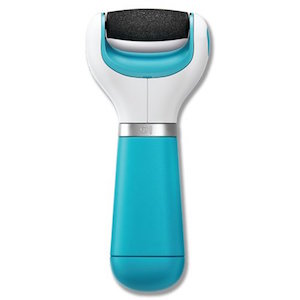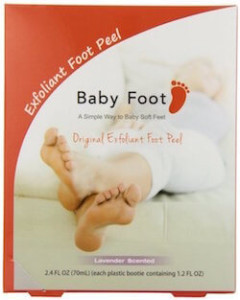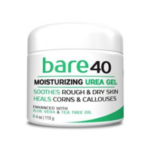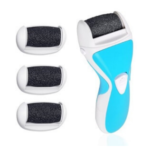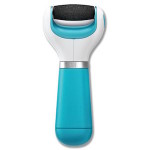Best Callus Remover Gel for Feet on the Market
The best callus remover gel products are a topical treatment designed to break down the hard skin that creates calluses. Such treatments are technically considered topical drugs, even if they can be purchased over the counter. Different brands include different active ingredients, and while it is always important to read the label, it is especially important to read callus remover gel packaging if you have any allergies or a history of skin problems. If you have other health concerns, especially involving your feet, you should check with a doctor before using such a gel, and you should never apply a gel to an open wound. If the cracks in your feet have gotten so bad they bleed, it would be wise to investigate other options.
Callus Gels vs. Peels vs. Files
The immediate benefits of files are obvious. They can make a dramatic and visible difference after just one use, but they can easily sheer off healthy skin along with the hard layers of a callus. Gels are less intimidating than rasps and files, which are literally designed to grind or scrape the skin off your feet. Callus remover gels, however, have their own risks. Since they are chemical treatments, it is possible to burn thinner areas of delicate skin (including your hands) with a gel. It is difficult to tell which tool requires the least effort to operate. While electric files require fairly little effort to operate, they are arguably less effective than traditional files, and gels often require a rub with a pumice stone to remove all the dead skin that sloughs away after the gel is rinsed off.
Unlike any kind of file, peels can treat your entire foot, including tender areas between your toes. Gels are meant to be applied only to calluses, and while they can be more effective than peels, they have a better chance of burning. In general, the weaker the product’s active ingredients, the less likely it is to burn, but the more repetitions are needed to remove calluses. The stronger the active agents, the tougher it is on calluses. Peels can work in areas gels might burn, but gels are designed to attack calluses.
Even if a gel cannot remove a callus on its own, it can significantly soften trouble spots, making it far less frustrating and arduous to buff away the remains of a callus with a pumice stone.
Comparison
| Gels | Peels | Files | |
|---|---|---|---|
| Type of Callus | Used for strong and large calluses. | For normal-size calluses. | Any callus size. Bigger calluses will take more effort to remove. |
| Effectiveness | Requires rubbing with pumice stone to remove skin | Long term commitment but can be effect on all parts of the feet (not just callus location) | Less effective than gels but easy to use and quick. |
| Risk | Chemical treatments. Possible to burn areas of the skin if not carefully applied. | Not much risk. Takes longer time for results so less irritation to skin. | Excessive use may rub down skin too much and cause slight pain. |
| Price | Cheapest option and lasts longest | One time use. Expensive in comparison | Battery powered and just requires rolle replacement. Most people uses electric files. |
Please remember: it is crucial for both safety and performance to read a gel’s directions thoroughly before beginning treatment.
Below is our review of ProLinc Callus Eliminator, the best callus remover gel on the market.
ProLinc Callus Eliminator Review
Features
ProLinc produces salon quality skin and nail products. Everything from their packaging to the images on their website emphasizes minimalism and efficiency. Unlike many past products we’ve examined, this gel is not overtly marketed as part of a beauty routine. Instead, the Callus Eliminator is presented with carefully gender-neutral images that emphasize the product and the problems for which it is designed.
The instructions advise using the product for two rounds of treatment before attempting to remove any calluses. According to the directions, a secondary gel – Dry Heel Eliminator – should also be applied for best results. What’s more, the gel is designed to be used in sync with pumice stones or other abrasive tools as part of a full pedicure treatment.
 Click here to see reviews and prices for the ProLinc Callus Eliminator on Amazon.com
Click here to see reviews and prices for the ProLinc Callus Eliminator on Amazon.comCustomer Sentiment
Although generally positive, even the most enthusiastic customers praise ProLinc as part of a multi-step process, but it’s important to note that many people identified themselves as regular callus sufferers. This product, they claim, is just as effective as professional treatments they’ve had in salons. Remember to follow the directions to wear gloves when applying the product. While this and most other gels will soften hard skin in preparation for pumice stones and other rasps, they are rarely a one step process to callus-free feet.
Pros:
- Makes buffing less strenuous on hands
- Eases overall process of removing calluses
- Softens feet
- Does not fling dead skin around work area
Cons:
- Usually requires multiple treatments
- Usually requires additional steps, such as buffing away dead skin with a pumice stone
- May create chemical burns if incorrectly applied

